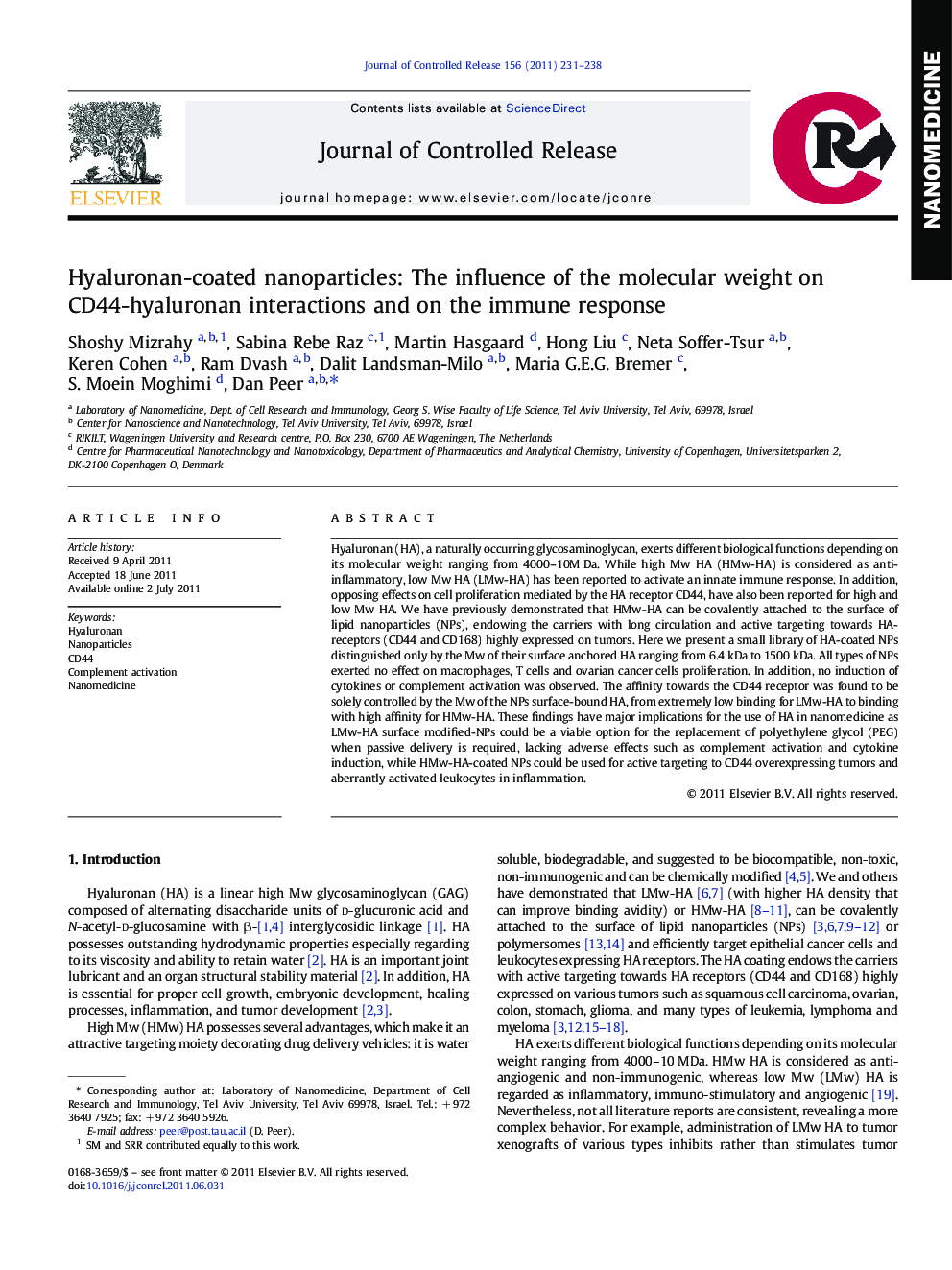| کد مقاله | کد نشریه | سال انتشار | مقاله انگلیسی | نسخه تمام متن |
|---|---|---|---|---|
| 1424835 | 986741 | 2011 | 8 صفحه PDF | دانلود رایگان |

Hyaluronan (HA), a naturally occurring glycosaminoglycan, exerts different biological functions depending on its molecular weight ranging from 4000–10M Da. While high Mw HA (HMw-HA) is considered as anti-inflammatory, low Mw HA (LMw-HA) has been reported to activate an innate immune response. In addition, opposing effects on cell proliferation mediated by the HA receptor CD44, have also been reported for high and low Mw HA. We have previously demonstrated that HMw-HA can be covalently attached to the surface of lipid nanoparticles (NPs), endowing the carriers with long circulation and active targeting towards HA-receptors (CD44 and CD168) highly expressed on tumors. Here we present a small library of HA-coated NPs distinguished only by the Mw of their surface anchored HA ranging from 6.4 kDa to 1500 kDa. All types of NPs exerted no effect on macrophages, T cells and ovarian cancer cells proliferation. In addition, no induction of cytokines or complement activation was observed. The affinity towards the CD44 receptor was found to be solely controlled by the Mw of the NPs surface-bound HA, from extremely low binding for LMw-HA to binding with high affinity for HMw-HA. These findings have major implications for the use of HA in nanomedicine as LMw-HA surface modified-NPs could be a viable option for the replacement of polyethylene glycol (PEG) when passive delivery is required, lacking adverse effects such as complement activation and cytokine induction, while HMw-HA-coated NPs could be used for active targeting to CD44 overexpressing tumors and aberrantly activated leukocytes in inflammation.
Figure optionsDownload as PowerPoint slide
Journal: Journal of Controlled Release - Volume 156, Issue 2, 10 December 2011, Pages 231–238